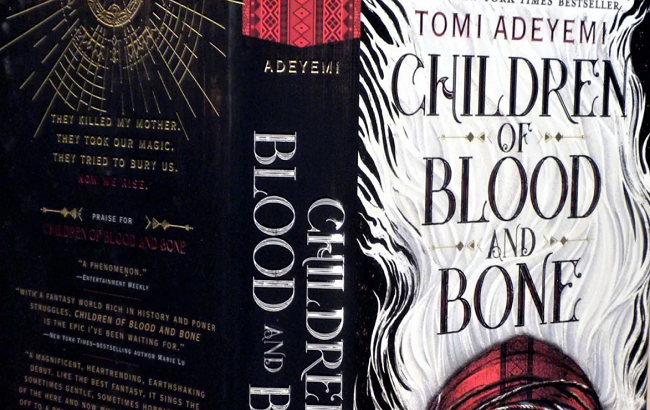Tomi Adeyemi’s debut novel Children of Blood and Bone has taken the world by storm with its rich world-building, compelling characters, and an epic story of magic, rebellion, and personal transformation. The book is the first in the Legacy of Orïsha series, set in a West African-inspired fantasy world filled with gods, magic, and dangerous secrets. If you’ve already read it, you know that Children of Blood and Bone isn’t just a typical fantasy novel—it’s one that will make you think about power, oppression, identity, and resilience.
In this article, I’ll reveal five incredible secrets about Children of Blood and Bone that you may not have known. From the depth of its cultural influences to the hidden connections within the characters’ relationships, there’s a lot more to this story than meets the eye. Whether you’re new to the book or a longtime fan, these secrets will make you appreciate the story even more.
1. The Deep Influence of West African Culture in Children of Blood and Bone
One of the most incredible secrets behind Children of Blood and Bone is how deeply the story is rooted in West African culture. Adeyemi has carefully crafted the world of Orïsha using elements of African mythology, history, and culture, bringing a refreshing and unique perspective to fantasy.
A Rich Tapestry of African Mythology
The story of Children of Blood and Bone is heavily influenced by African mythology. The gods, spirits, and magical beings in Orïsha are inspired by real African deities and folklore. The magic system itself is based on spiritual forces that come from the land, the sky, and the sea, much like the way African cultures view the interconnectedness of the earth and the divine. The world-building in the book takes readers on a journey to a place that feels not just fantastical, but also deeply rooted in real-world beliefs.
- Gods and Magic: The book’s gods, such as Orïsha’s magical deities, are drawn from African religious systems. The way the Maji (those with magic) interact with these forces is influenced by the spiritual practices in African traditions.
- Land and Nature: The connection to the land in Children of Blood and Bone is very much tied to African culture, where nature is revered, and the land is seen as sacred. The book’s world-building incorporates elements like the mystical forests, the sacred river, and the landscapes that reflect the natural beauty and spirituality of Africa.
The Role of Language and Names
Names are important in many African cultures, and Adeyemi incorporates this practice into her story. Characters in the book have names with significant meanings, many of which reflect their roles, relationships, and cultural roots. Zélie’s name, for example, carries meaning in various African languages and serves as a subtle yet powerful reflection of her character’s identity.
The attention to detail in terms of culture and mythology not only enriches the world of Children of Blood and Bone but also offers readers a chance to learn about African traditions through storytelling.
Influence on the World of Orïsha
Orïsha, the setting for most of the book, is a fantastical world that draws upon various African countries and landscapes. From the mystical villages to the regal palaces, the world is alive with color and history. Through Adeyemi’s vivid descriptions, readers get a glimpse of Africa’s diverse geography, from lush forests to desert plains. Even the names of the cities and villages in Orïsha reflect African cultures, giving the world a sense of authenticity.
For those who are fascinated by African culture and magic, the world of Children of Blood and Bone provides a rich and immersive reading experience that’s unlike any other.
2. Zélie’s Transformation Is a Symbol of Resistance and Empowerment
One of the most powerful aspects of Children of Blood and Bone is Zélie Adebola’s character development. She begins the story as a girl living in fear and oppression, but as the plot unfolds, she transforms into a fierce leader, fighting for justice and freedom. Zélie’s journey is not just about magic—it’s also about resistance and self-discovery.
From Oppression to Empowerment
At the start of the story, Zélie is part of a marginalized group of people known as the Maji, who once possessed magical abilities. However, after the king of Orïsha orders the massacre of Maji people, Zélie’s mother is killed, and magic is wiped out from the land. Zélie’s mission to restore magic to the Maji is not just an act of defiance against the king—it’s a quest to empower her people, reclaim their rights, and restore balance to Orïsha.
Through her journey, Zélie learns to tap into her inner strength. She faces unimaginable challenges but refuses to back down, showing readers that personal transformation often requires resilience and the will to fight back. Zélie represents resistance in a world that seeks to silence and control those who are seen as “lesser.” Her development throughout the novel is a powerful message about standing up against injustice, no matter how insurmountable it may seem.
- Zélie’s Strength: Throughout her journey, Zélie’s physical and emotional strength grow. She learns not only to fight but also to trust herself and her abilities. Her transformation into a leader shows that anyone can rise above their circumstances.
- Empowering Others: Zélie’s growth is also about empowering others, especially her fellow Maji. She becomes a symbol of hope and unity for a people who have long been oppressed.
Zélie’s transformation from an ordinary girl to a leader who dares to defy the system is one of the novel’s most compelling aspects. It speaks to the universal struggle for justice and the importance of resilience in the face of adversity.
3. Magic and Maji: Unlocking the Secrets of the World’s Magic System
The magic system in Children of Blood and Bone is another incredible secret that sets the book apart from other fantasy stories. In Orïsha, magic was once widespread, and the Maji were the magical people who wielded it. However, after the king’s soldiers killed off the magic-wielding Maji, the magic disappeared, and the Maji became persecuted. The story centers around the restoration of magic, and the magic system itself is fascinating, with different types of abilities that reflect the elements.
The Role of Magic in Orïsha
Magic in Orïsha is powerful and sacred. The Maji have abilities tied to different elements, including:
- Fire: Some Maji can control and create fire.
- Water: Others can manipulate water and its properties.
- Earth: Earth-wielding Maji can control rocks and the land.
- Air: Some Maji have control over the winds and the skies.
Each Maji possesses unique abilities, and the magic system is complex, with a deep connection to nature and the spiritual world. The restoration of magic plays a major role in the plot, as Zélie embarks on a journey to unlock hidden powers and bring magic back to her people.
The Hidden Power of Zélie’s Magic
As Zélie discovers her own powers, she learns that her magic is more powerful than she could have imagined. She holds the key to restoring magic, and this discovery drives the narrative forward. But magic also comes with its own dangers. As Zélie taps into her powers, she must learn to control them before they overwhelm her.
The magic system in Children of Blood and Bone is more than just a plot device—it’s an essential part of the story that reflects the themes of power, oppression, and resistance. The Maji’s magic is their strength, and Zélie’s ability to restore it represents hope for her people.
4. The Complex Relationship Between Zélie and Amari
One of the most surprising and heartwarming aspects of Children of Blood and Bone is the evolving relationship between Zélie and Amari. At the start of the book, Amari is introduced as the princess of Orïsha and the daughter of the king, who is responsible for the persecution of the Maji. However, as the story progresses, we learn that Amari is not the villain she initially appears to be. In fact, she is a powerful ally in Zélie’s fight to restore magic.
A Bond Formed in Rebellion
Amari’s character arc is one of self-discovery and rebellion against her father’s oppressive rule. When she realizes the injustices her family has caused, she decides to fight for change. Zélie and Amari initially clash because of their differences, but as they come to understand each other, they form a powerful partnership.
Their relationship is a powerful symbol of unity and understanding. Despite their different backgrounds—Zélie being a commoner and Amari being royalty—they come together for a common cause. Their bond grows as they fight side by side, showing that change can only happen when people unite across societal divides.
- Growth in Trust: Amari’s growth throughout the novel is incredible. She starts as a naive princess, but by the end of the book, she is a strong ally who will do anything to help the Maji.
- Mutual Respect: Despite their initial differences, Zélie and Amari develop mutual respect and understanding. Their partnership proves that true strength comes from unity.
The relationship between Zélie and Amari is one of the heartwarming aspects of the book, and it demonstrates that even the most unlikely alliances can lead to change.
5. Themes of Power, Oppression, and Identity
At its core, Children of Blood and Bone explores themes of power, oppression, and identity. The Maji’s struggle to reclaim their magic and their rights is an allegory for marginalized groups around the world who have been silenced and oppressed. Zélie’s journey to restore magic is more than just a quest—it’s about finding her identity and standing up against systems of power that seek to control her.
- Oppression and Resistance: The oppression of the Maji mirrors the struggles of marginalized communities in the real world. The story highlights the importance of resisting systems of power that seek to silence or marginalize people.
- Power and Identity: Zélie’s struggle to understand her magic is also a journey of self-discovery. Through her powers, she learns who she is and what she’s capable of, reflecting the importance of understanding one’s own identity.
In a world where power often determines who gets to thrive and who gets to suffer, Children of Blood and Bone is a powerful reminder that resistance is possible, and change can happen when people stand up for what’s right.
Conclusion
Children of Blood and Bone is more than just a fantasy novel. It’s a story about magic, resistance, identity, and the struggle for justice. From its deep roots in African culture to its exploration of powerful themes like oppression and self-discovery, there is much to uncover in this incredible world. As Zélie embarks on her quest to restore magic, she shows us all the power of resilience, unity, and standing up for what’s right.
If you haven’t yet read Children of Blood and Bone, now is the perfect time to dive into this unforgettable story. And if you’ve already experienced the magic of Orïsha, hopefully, these secrets have given you a deeper understanding of the world and its characters.
If you’re also interested in expanding your knowledge in other areas, like the world of cryptocurrencies, check out this guide on crypto opportunities.
Children of Blood and Bone is a journey you won’t want to miss.
You May Also Like:



